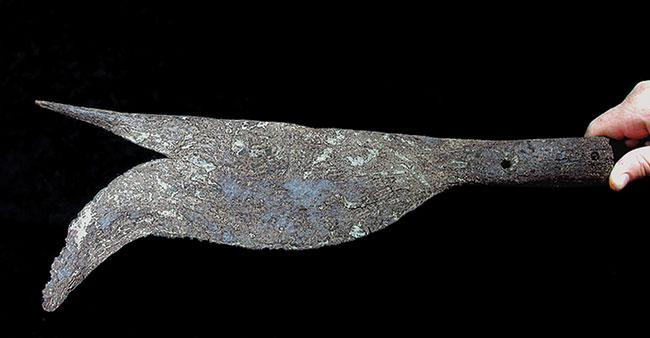In a significant move aimed at enhancing the effectiveness of services for the nation’s military personnel and veterans, New Jersey Governor Phil Murphy has signed a landmark bill that will formally separate the state’s Department of Military and Veterans Affairs into two distinct entities. This legislative development, which comes amid ongoing discussions about the adequacy of support for veterans and active service members, underscores a growing commitment to addressing the unique needs of these groups more efficiently. As the state prepares for the implementation of this bifurcation, stakeholders from both the military and veterans’ communities are weighing in on the potential impacts of this unprecedented restructuring, which promises to reshape the landscape of military and veterans services in New Jersey.
New Jersey Governor Signs Landmark Legislation to Separate Military and Veterans Affairs Departments
In a significant move to enhance the effectiveness of services provided to New Jersey’s military personnel and veterans, Governor Murphy has signed into law a pivotal bill that will establish distinct departments for military affairs and veterans services. This reform aims to streamline operations, ensuring that resources are allocated more efficiently and that the needs of both groups are addressed with greater specificity. By separating these departments, the state hopes to foster improved communication and coordination, ultimately leading to better support for those who have served in uniform.
The newly established frameworks will focus on tailored strategies for each population. Key objectives of the split include:
- Improved Access: Providing easier navigation through programs tailored to the unique needs of military members versus veterans.
- Enhanced Resources: Allocating dedicated funding and resources to address specific challenges faced by each group.
- Targeted Outreach: Implementing programs designed to engage and inform both current service members and veterans about their rights and available services.
This legislation reflects New Jersey’s commitment to honoring the sacrifices made by its service members and ensuring that veterans receive the comprehensive support they need as they transition back into civilian life.
Implications of the Split: Enhancing Efficiency and Focus for Service Members and Veterans
The recent signing of the bill to split the military and veterans affairs department by Governor Murphy is poised to bring significant changes in how services are delivered to service members and veterans. By establishing separate entities, the intent is to create more streamlined processes that cater specifically to the unique needs of each group. The delineation is expected to enhance focus on critical areas such as health care, benefits administration, and support services, ultimately leading to improved outcomes for those who have served the nation. This shift could result in better resource allocation, allowing for tailored programs that respond directly to the challenges faced by active duty personnel and veterans alike.
In addition to improved efficiency, the split could foster a stronger emphasis on communication and collaboration between the departments. By clearly defining roles and responsibilities, each division can better address specific issues without the confusion often caused by overlapping mandates. The anticipated benefits include:
- Increased Accessibility: Easier navigation of services for veterans and service members.
- Targeted Support Programs: Development of initiatives that specifically address gaps in care or support.
- Enhanced Monitoring and Evaluation: Greater accountability in how services are administered and outcomes measured.
| Area of Impact | Expected Outcome |
|---|---|
| Health Care Delivery | Improved access and reduced waiting times. |
| Benefit Administration | Streamlined processes for claims and appeals. |
| Veteran Outreach | More effective engagement and support. |
Recommendations for Successful Transition and Implementation of the New Structure
As New Jersey embarks on this significant structural change in military and veterans affairs, effective communication will be essential. To facilitate a smooth transition, it is crucial for all stakeholders to engage in ongoing dialogues. Regular updates should be provided to both employees and veterans, offering clear insights into upcoming changes and their implications. Establishing dedicated transition teams can help address immediate concerns and foster collaboration between the newly formed agencies. Furthermore, conducting workshops and training sessions will empower staff with the necessary skills to adapt to their new roles effectively.
In addition to internal communications, it is important to concentrate on the external impact of this transition on veterans and their families. Community forums and feedback mechanisms should be introduced to ensure that the voices of those affected are heard and considered during the implementation process. A clear roadmap that outlines milestones and objectives should be drafted to keep the public informed about progress and expected outcomes. To illustrate this, the following table outlines key phases in the implementation timeline:
| Phase | Timeline | Objective |
|---|---|---|
| Planning | 1-3 months | Define roles and responsibilities |
| Training | 4-6 months | Prepare staff for new structures |
| Launch | 7-12 months | Commence operations of new agencies |
In Conclusion
In conclusion, Governor Phil Murphy’s recent decision to sign legislation that separates the New Jersey Department of Military and Veterans Affairs from its current structure marks a significant shift in how the state will manage military and veterans services. This move aims to streamline operations and enhance the support provided to those who have served the nation. As the bill takes effect, stakeholders and advocates will be keenly watching its implementation and impact on veterans’ service delivery in New Jersey. With this strategic reform, the state underscores its commitment to prioritizing the needs of its military and veteran population, setting a precedent for similar initiatives nationwide.
















